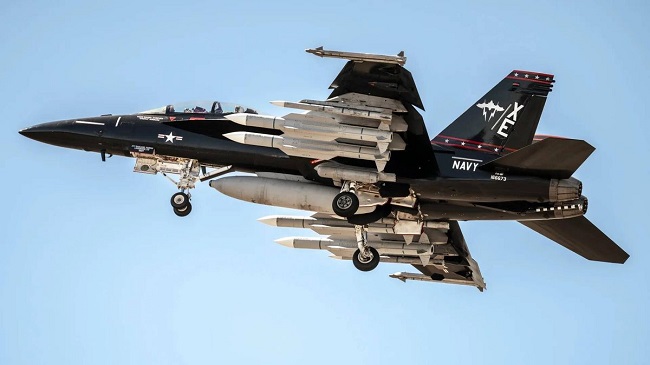
Over the past few days, a Boeing F/A-18F of Evaluation Squadron VX-9 from the Point Mugu naval range was spotted equipped with a decidedly impressive air-to-air missile package (Beast Mode).
In fact, the aircraft carried no less than 9 missiles (in reality, simple inert mock-ups for evaluation): 4 AIM-174B missiles (the air-to-air version of the SM-6, with a range of over 400 km), 3 AIM-120D AMRAAM missiles (190 km range in this last version, thus almost the same as the future AIM-260 JATM currently under development), and 2 AIM-9X in the new Block-II variant.
The equipment was completed by an FPU-13 pod/tank, equipped with a Lockheed Martin ASG-34A(V)1 IRST21 Block-2 IR search and tracking system, and an RTX ASQ-228 ATFLIR (Advanced Targeting Forward-Looking Infrared) targeting pod.
These IR devices play an important role in air defence missions because they allow the identification of a long-range contact in a completely passive, and therefore stealthy, manner in addition to the normal RTX APG-79 targeting radar.
The AIM-174B missile marks the US Navy's return to the Very Long Range Air-to-Air Missile (VLRAAM), and has already been seen aboard the aircraft carrier USS CARL VINSON (CVN-70) during exercise RIMPAC (Rim of the Pacific) 2024.
In this way, the US Navy obtains a BVR (Beyond Visual Range) intercept capability superior to that offered by the Chinese PL-21 or the Russian R-53M (AA-13 AXEHEAD). It should be noted that no less than 7 of the 9 missiles carried by this F/A-18F have a longer range than that offered by the now mythical AIM-54C Phoenix (180 km), used by the F-14 until 2004.
With the new AIM-174B, US Navy's SUPER HORNETs will be able to engage targets at much greater ranges than is currently possible with the AIM-120 AMRAAM, significantly improving the protection of aircraft carriers against both cruise and ballistic missile threats.








.png)
